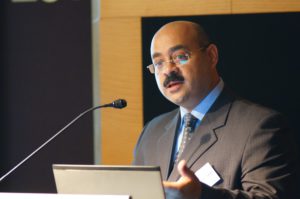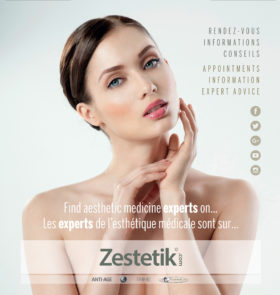By Doctor Ashraf Badawi
Body shaping is becoming a global demand not only in the west but everywhere all over the world, patients started to seek this service.
There are many problems patients present with and considered candidates for body shaping. These include cellulite, skin laxity, obesity and localized fatty deposits. Patients expectations in many cases are unrealistic and this might present a big challenge for the practitioner which requires good management.

Managing the local fat deposits and cellulite has to take into consideration the various etiological factors. Recently, many devices have been introduced in the market for treatment of localized fat deposits and cellulite. Without proper understanding the Pathogenesis of Cellulite and localized fatty deposits, one cannot select the most appropriate technology to utilize nor have the right expectations.
Lipolysis
Lipolysis is a medical procedure of melting and removing unwanted fatty deposits on the body. This procedure can change the shape of our bodies and faces.
When there is accumulation of fat in a localized area, the pathology is not just fat accumulation but in addition there is impairment of local blood circulation and lymphatic obstruction. After achieving lipolysis, it is important to consider dealing with skin laxity which may result from loss of the subcutaneous fat.
Liposuction might be one of the most popular invasive cosmetic procedures in the world. During the last 10 years, the laser assisted liposuction became popular with the added advantage that the heat generated by the laser leads to skin tightening in addition to the lipolysis effect which helps in better and more effective body shaping.
Currently there are several non-invasive body contouring techniques growing in the aesthetic medicine for reducing localized subcutaneous adipose tissue: cryolipolysis, radio frequency (RF) and Infrared lasers and light sources in addition to the injection lipolysis which is a minimally invasive procedure. Lately the cryolipolysis has been very popular.
Cryolipolysis
Cryolipolysis is a medical treatment used to destroy fat cells. Its principle relies on controlled cooling to near 4° Celsius (approx. 39° Fahrenheit) for the non-invasive localized reduction of fat deposits in order to reshape body contours. The exposure to cooling is set so that it causes cell death of subcutaneous fat tissue without apparent damage to the overlying skin. The procedure is billed as a nonsurgical alternative to liposuction. Generically the process can also be known as “fat freezing”.
In Europe cryolipolysis machines have been developed for suitability in aesthetic clinics and spas. Brands of devices include CoolSculpting, Lipoglaze, Clatuu, isoLipo, and 3d lipo among others.
Evidence supports its effectiveness at three to four months.
It appears primarily applicable to limited discrete fat bulges. According to a 2015 review it shows promise with the average fat reduction, measured by calipers of about 20 percent. With the small number of people treated, clinical data remain scarce, thus it is not known how long the treatment effect will last, or when and if later treatments would be necessary to maintain the result.
Side effect data are based on a limited experience. Transient local redness, bruising and numbness of the skin are common side effects of the treatment and are expected to subside. Typically sensory deficits will subside within a month. The effect on peripheral nerves was investigated and failed to show permanent detrimental results. No serious long-lasting side effects were encountered during follow-up time of six months. There are few recent reports about paradoxical fat growth after the cryolipolysis however more studies are required to confirm or deny such a complication. If cryolipolysis is going to be used, it is very important to combine it with some other modalities to enhance the local blood circulation and lymphatic drainage as well as to improve the skin tightening.

Another alternative is the non-invasive laser tightening. In this modality, infrared lasers like the Nd:YAG 1064nm (Tight Sculpting from Fotona) are used to generate heat reaching up to 45C and maintained for about 8 minutes. This leads to fat cells apoptosis as well as skin tightening. In this modality, not only the lipolysis is achieved but also the skin is tightened and the microcirculation is enhanced.
The same applied for Radiofrequency devices where Radiofrequency is used to heat up the subcutaneous tissue and fat leading to lipolysis as skin tightening. Several sessions are usually required before seeing a significant difference however the procedure is not associated with any down time.
Finally, it is of outmost importance that the patient is left with realistic expectations and proper knowledge about the importance of diet and exercise for improving and maintaining the body shaping procedures.
 By Doctor Ashraf Badawi
By Doctor Ashraf Badawi
MD, PhD
Assistant Professor of Dermatology, Laser Institute, Cairo University, Egypt
Visiting Professor of Dermatology and Laser applications, Szeged University, Hungary
Laser Consultant, Canada
Vice President of the ESLD & ESCAD







